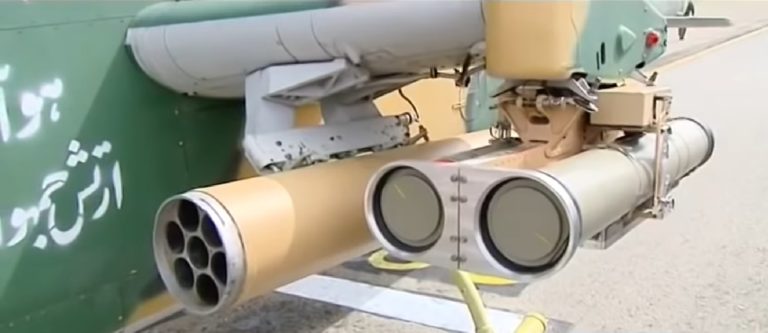On April 25, Iran showcased three domestically designed precision-guided air-to-surface missiles that will soon enter the mass-production phase.
The three missiles, dubbed Heidar, Qamar-e Bani Hashem, and an air-launched version of the Dehlaviyeh, have a range of more than eight kilometers.
According to Fars News, the Heidar missile can be equipped with several types of seekers that would enable its deployment in different weather conditions. The one showcased appeared to be equipped with an infrared imaging seeker. The missiles can be used against armored and ground-based targets, including enemy gatherings. Its warhead can penetrate 1,000mm of armour.
The second missile, Qamar-e Bani Hashem, can be also equipped with several types of seekers. However, unlike Heidar it can be also used against aerial targets. In the photos, the missile appears to be equipped with an infrared homing seeker.
Fars News said that the third missile is an air-launched version of the Dehlaviyeh anti-tank guided missile (ATGM), which is a copy of the famous Russian system Kornet. The missile is guided by a laser beam riding and can penetrate 1,200mm of armour.
The three missiles, which reportedly went through various tests, were presented on US-made AH-1J attack helicopters of the Iranian military. It’s still unclear if other types of helicopters can be armed with the new missiles.
Iran boosted its research and development in the military sector recently, likely to counter the repeated threats of the U.S. and Israel. The two countries’ attempt to pressure Tehran into giving up its missile program is apparently back-firing.












